Are you ready to take your B2B SaaS sales to the next level?
Creating a powerful sales plan will help your business reach its full potential in the competitive SaaS scene. Nowadays, you need to stay ahead of the game and catch the eye of your target audience.
Whether you are a seasoned expert or a novice, this guide will provide you with the tips and strategies to get more conversions, leads, and ultimately revenue. From identifying your target customer persona to utilizing advanced marketing techniques, we will discuss what industry leaders develop and how they act.
Get ready to change your mind, improve your sales performance, and leave your competition in the dust.
Get ready to dominate the SaaS world!
Understanding SaaS Sales Strategy
B2B SaaS, or Business-to-Business Software as a Service, is tailored for businesses rather than individual customers. For example, consider that you own an e-commerce store.
To ensure your store operates smoothly, you must handle various tasks like warehousing, inventory planning, marketing, shipping, and invoicing. Juggling all of these tasks can be cumbersome for any entrepreneur. So, what's the real answer?
As the founder of an eCommerce store, you can subscribe to different B2B SaaS solutions that perform each of the functions in a different box. One of the important advantages is that they are all accessible on the cloud, so they offer the most convenience for users.
What makes B2B SaaS solutions even more appealing is that they are built with a strong focus on addressing eCommerce stores' specific challenges. This means you can enjoy various customized services and add-on features as a customer. These customized tools aim to simplify your tasks and let you manage your online store more easily.
B2B SaaS Market Statistics
The worldwide B2B SaaS industry is changing and shows some key patterns like:
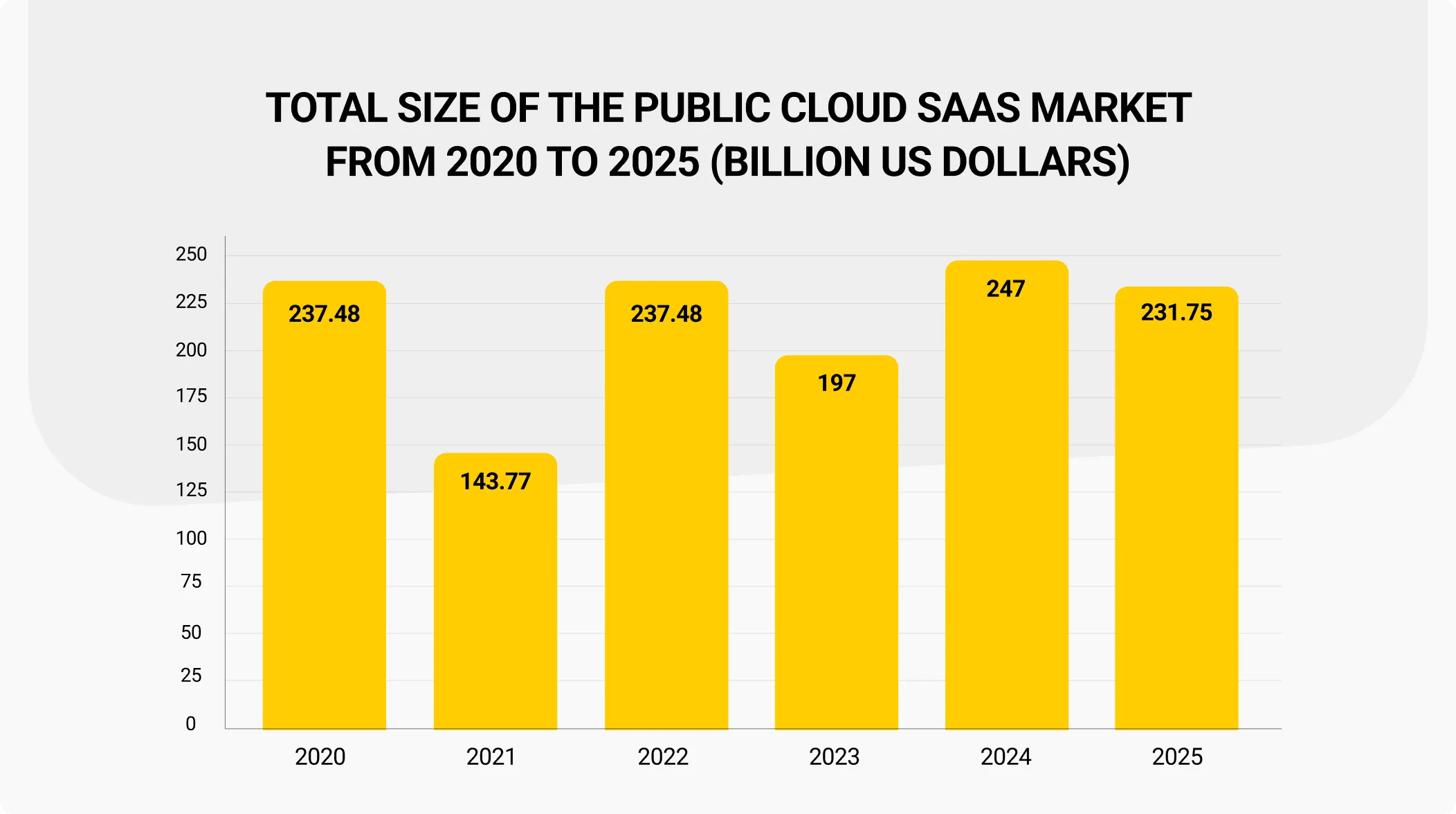
- Many B2B SaaS companies now use Artificial Intelligence (AI) to speed up complicated tasks and workflows. Predictions suggest that by 2026, over 80 percent of companies will have AI-driven apps in their IT systems. This shows a big jump from 5 percent in 2023.
- The growing use of smartphones (with 4.7 billion global users), laptops (5 billion users), and tablets (1.28 billion users) has driven an increasing demand for cloud-based solutions that offer accessibility from any location.
- Traditional businesses are embracing digital transformation by adopting SaaS solutions, thereby contributing to the overall expansion of the B2B SaaS industry.
Top B2B SaaS Sales Strategy To Follow
A significant 80% of businesses currently rely on SaaS products, with a projected increase to 85% by 2025.
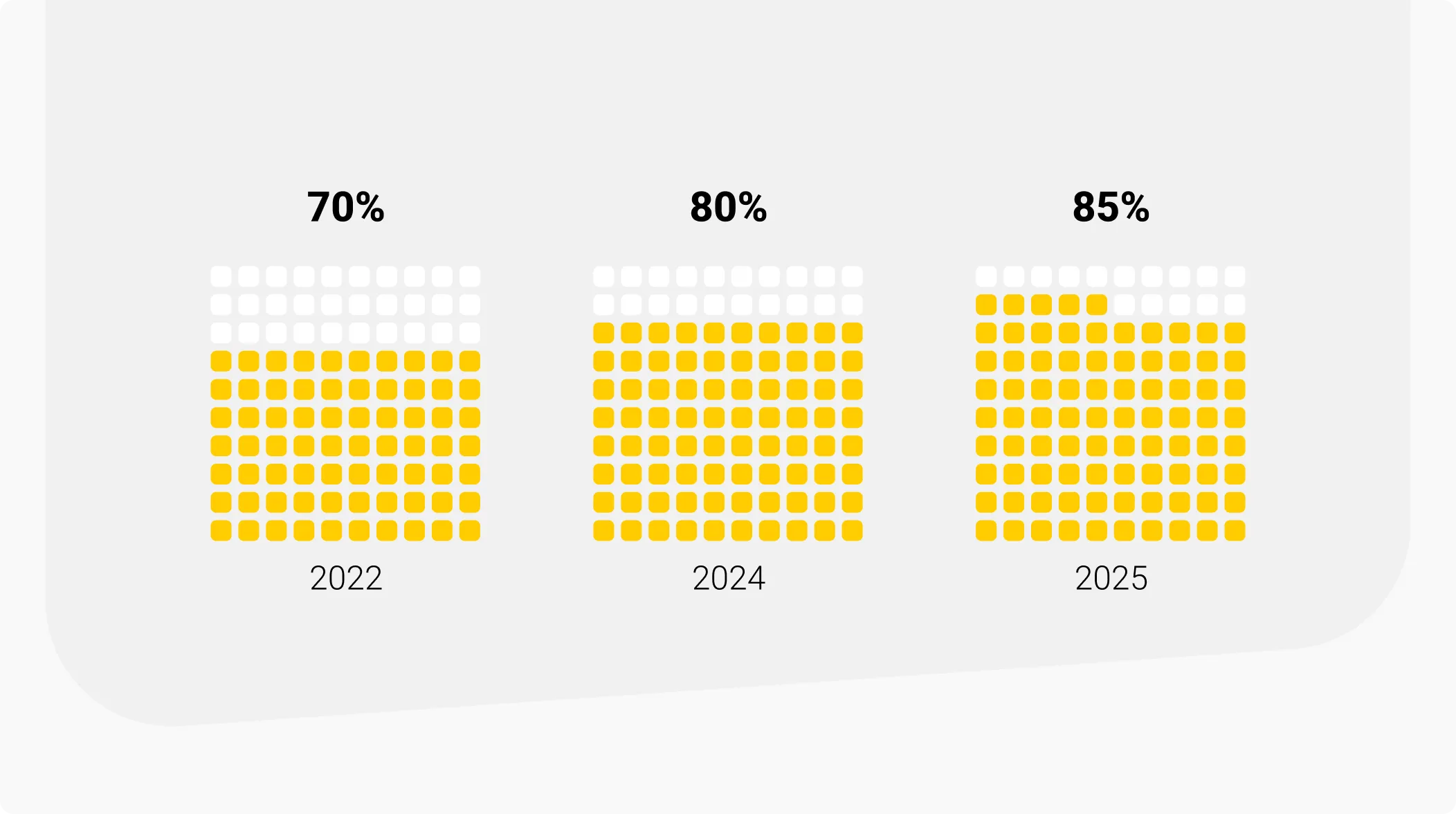
This trend implies that SaaS is clearly the future of business software, and it provides incredible opportunities for anyone who is selling SaaS products. Nonetheless, having a great product is not enough in this crowded space. There are several important elements to consider to differentiate yourself from the multitude of competition.
In the sections below, we’ll focus on B2B SaaS sales, exploring the key elements contributing to a successful B2B SaaS sales strategy. Incorporate the following valuable tips to enhance your SaaS sales team's ability to close more deals successfully.
Prioritize Value
Unlike physical goods, the effects of software are only observable long-term, and addressing business issues takes time. When working with clients, the mindset must switch from what their SaaS product can do to the actual resolution of their issues. Research represents the fundamental component of creating value.
By embroiling yourself in really understanding the details of your potential customers' companies, you gain an in-depth understanding of how to deliver tailored value customized to their needs. Dig into sources such as their company website, the LinkedIn pages of employees or key decision-makers, review platforms, or trusted partners like AI Ark while you do your research.
By pairing research and active listening to spot pain points, you can proceed to follow up with prospects in a way that truly connects with them and highlights the real value that your SaaS company provides.
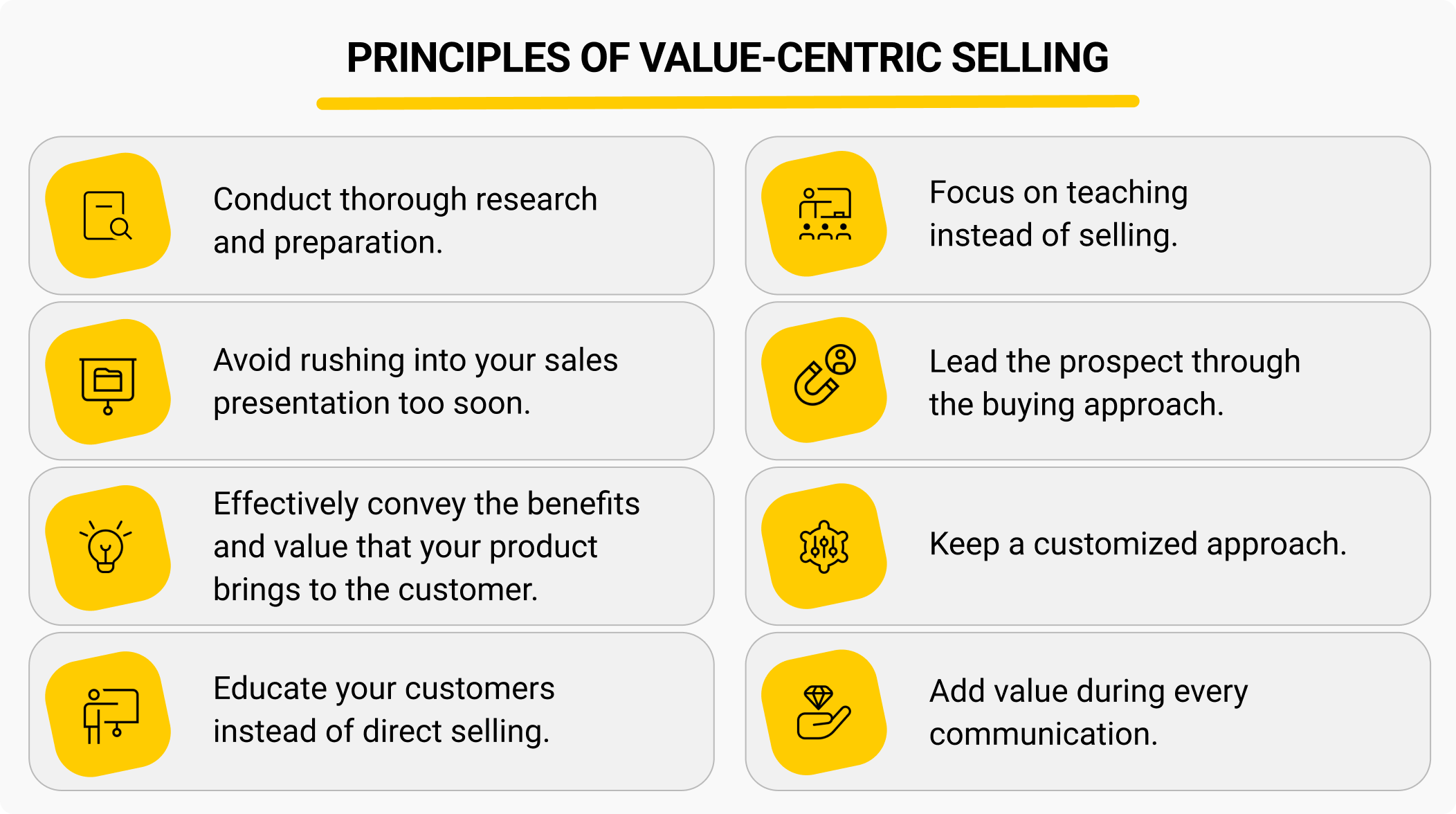
By focusing on value, you set your SaaS company apart from competitors. Let's look at a few examples of achieving this differentiation:
Cost Savings
Show how your product can save money and increase financial performance.
Reducing Time Consumption
Show listeners how your solution improves the speed of processes, which saves your customers time.
Minimizing Risks
Highlight how your SaaS reduces risks and provides security.
Increasing Profits
Demonstrate how your solution can scale your business, grow, and increase revenue.
These benefits will allow you to provide a clear value proposition to your customers for your SaaS product and a clear explanation for why they should buy from you instead of your competitors.
Engage in Collaborative Marketing
Think about collaborating with other companies to promote your brand and share the customer base you both have. Interestingly, 54% of companies revealed that partnerships contribute to over 20% of their total revenue, as reported by Partnerize.
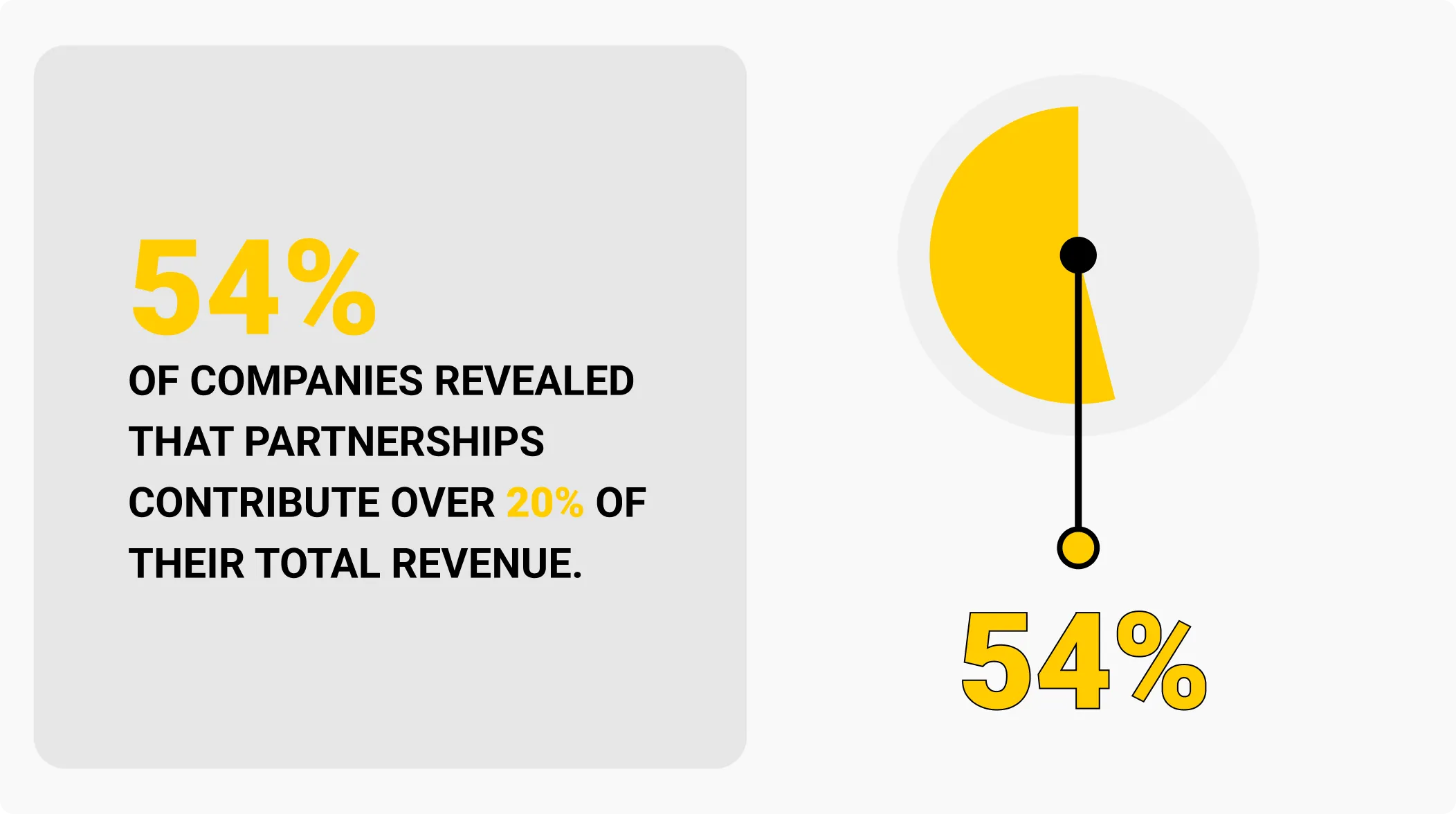
So, how might you work with a company that has the same target audience? A great option is to collaborate on co-marketing ideas. Collaborating on co-marketing ideas that involve content is Real Simple. Why not suggest a guest blogging exchange between the two companies?
This collaborative approach allows both organizations to leverage the content and reach new audiences.
Doing so can effectively broaden your customer base and extend your market presence to reach a fresh pool of potential clients. Another fruitful collaboration idea is to develop a lead magnet together. Combining efforts can create a valuable resource that attracts potential customers to provide contact information. The great thing about this option is that both businesses are able to utilize the shared leads, affording them essentially double the lead generation. You can leverage a partnership by joining forces with another company in the following ways. Working in conjunction with each other's strengths can create a great partnership, enhance brand awareness, and provide additional growth opportunities. So do not hesitate to engage and take advantage of these types of collaborations while maximizing your shared audiences.
Prioritize Customer-Centricity
86% of B2B buyers are willing to spend more for exceptional customer service, with some willing to pay up to 30% more for a better customer experience overall.
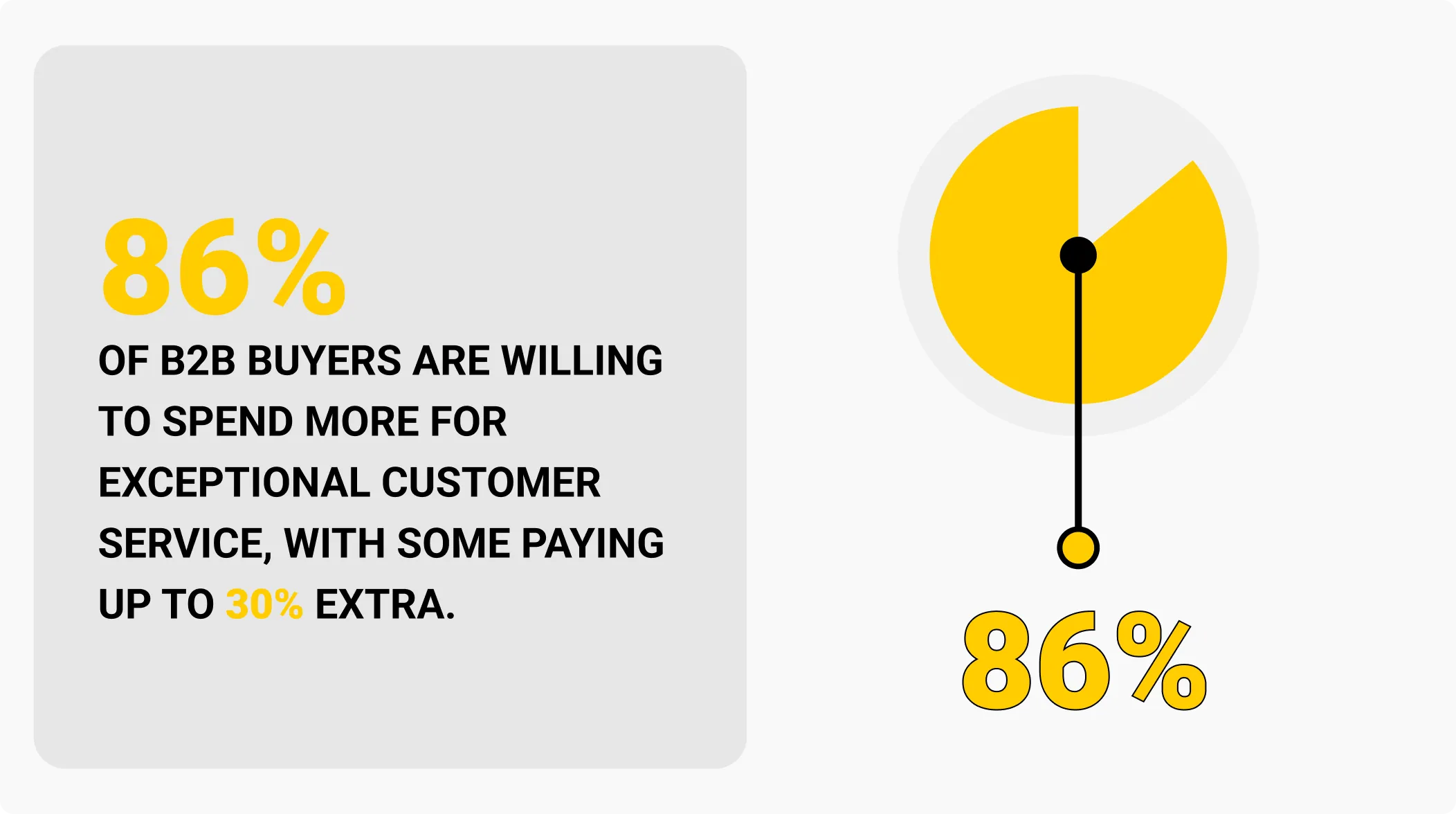
There's a real reason for the saying, "Always put the customer first." It's not just a cliche; there is real truth in that. Those companies that prioritize their customers and go above and beyond to service their customers are the ones that achieve real client retention. When you are conducting sales, you are bringing leads through a process, which includes establishing a relationship with your prospects, establishing credibility or authority, and ultimately closing the deal. But great companies set themselves apart because they offer outstanding customer service, and they do it throughout the entire process!
To serve your customers at the highest level, get to know your clients. Show your customers that you care, and actively seek their feedback.
Ask your customers how it feels to use your product or service, and ask for their suggestions. Seeking feedback makes your customers feel valued, appreciated, and important to you and to your business. Positive feedback experiences convert 70% of customers into loyal brand advocates.
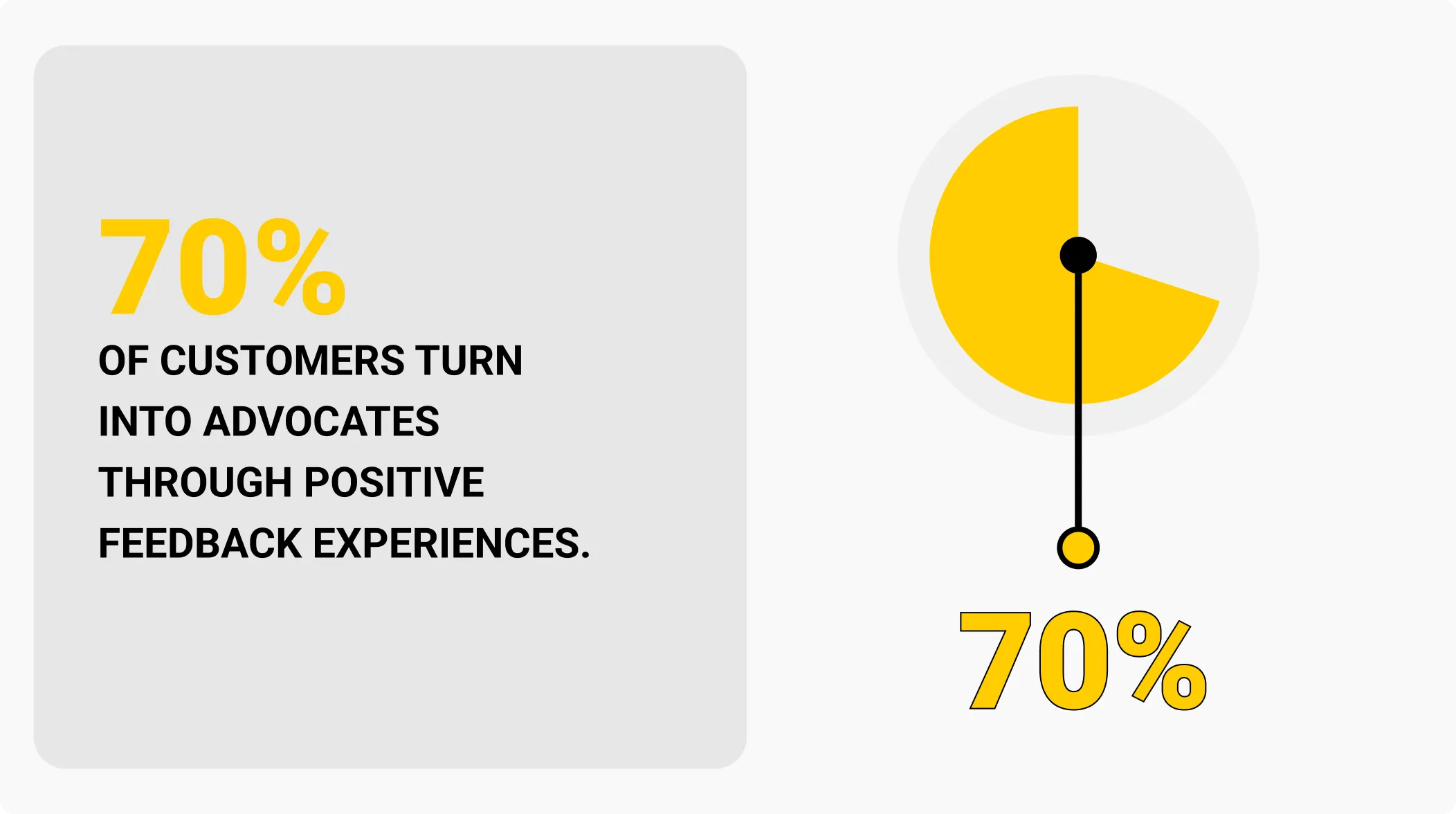
This is a tremendous opportunity for you to gather meaningful feedback to improve your offering better while also building a relationship with your customers.
You could set yourself apart from your competitors, improve customer loyalty, and really seize tremendous growth potential simply by emphasizing providing excellent customer support, from start to finish, during the B2B SaaS sales cycle. So, remember this isn't just a catchy statement, this is a principle that can honestly help automate your business to the next level!
Monitor Your Progress
Let me ask you something: How can you expect to improve your sales process if you do not consistently keep track of the most valuable metrics? And here is the kicker: Metrics tracking is not limited to just your marketing team. It’s a critical component in shaping your sales strategy. This means you need to pay attention to it.
By tracking the right metrics, you gain valuable insights into what works and what does not. It is a navigational tool that directs you toward the most effective techniques and strategies that yield optimal outcomes. By gaining valuable insights, you can make strategic choices and concentrate your efforts on the areas that yield significant results. To get started, take a look at this handy graph from Databox.

It gives a snapshot of metrics & KPIs that are worth tracking, and offers a useful reference for knowing which metrics are the most useful for your sales process.
From here, you can change your approach and make adjustments moving forward by optimizing your sales continuously. Keep in mind, tracking the metric is like having a secret weapon in your sales toolbelt. The sales metrics suggested enable you to make better decisions by making data-driven improvements to your decisions and your sales process. Thus, don't dismiss metrics tracking; it may change the game for your sales!
Employ a CRM System
Take advantage of a powerful tool.
A Customer Relationship Management (CRM) platform that stores all your crucial marketing and sales data in one convenient place. It is like having a trusty assistant who helps you stay in your leads' minds and enables you to connect with them in personalized and meaningful ways. Surprisingly, 72% of businesses that use CRM systems consider contact management as a highly desired feature, according to SuperOffice.
When you implement a CRM platform in your company's SaaS sales processes, your team is going to be able to take advantage of huge benefits. For one thing, it will help organize and structure your data so you do not lose any significant bits of information. That means you will no longer be sifting through old spreadsheets, and you will now have a streamlined, efficient process. The expected shorter sales cycles diverge from specific lines in your sales cycle because the CRM platform delivers valuable insights and selling tools to help guide your prospect to close. You'll also be able to accurately forecast sales and plan for the future, just with that alone. That's not all; A CRM platform will also handle the nitty-gritty things, such as automated follow-ups, saving a lot of time and energy.
Utilizing an audience segmentation capability allows you to get very specific in your messaging, and a much bigger bang on your prospects. A CRM platform will keep your sales team collaborating, so they stay harmonized. Additionally, setting reminders will allow no leads to fall through the cracks!
According to Gartner, 80% of B2B sales interactions will occur through digital channels by the year 2025. This is a reflection of how businesses evolve and get empowered through the utilization of CRM tools. If you have not yet embraced a CRM platform within your tool set, perhaps it is time to look at it again. Leveraging a CRM system could be able to support sales methods and expand your business scope. Don't overlook the chance to take advantage of advantage of a CRM system. It could be the blessing your sales team needs to become a more effective department.
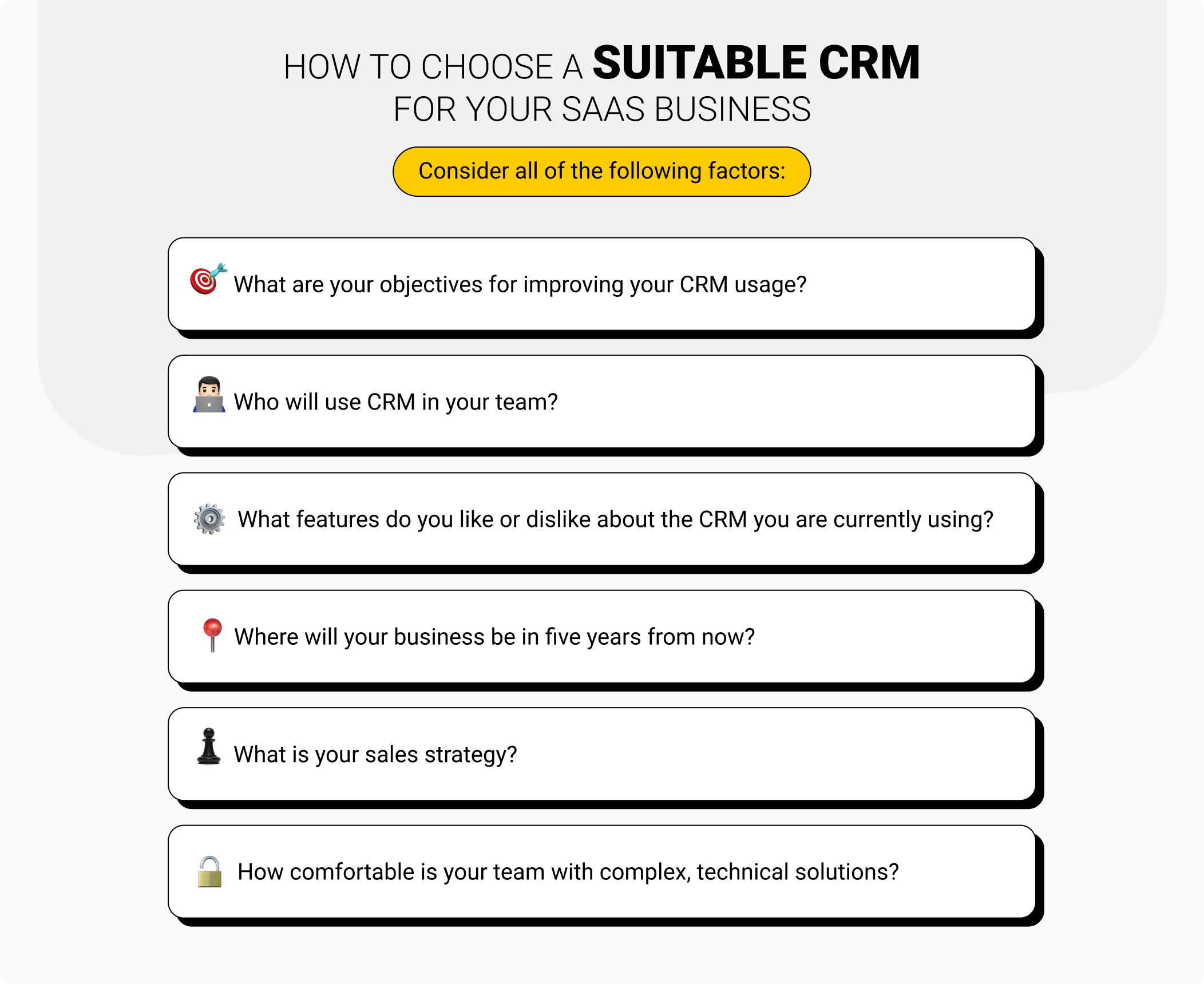
Minimize Churn
Why do customers cancel or not renew their subscriptions to your SaaS product?
It is a critical metric in the SaaS industry known as churn, and it can significantly impact your revenue, profitability, and long-term growth. Understanding the reasons behind churn requires a bit of investigation. Contacting your churned customers can be a fruitful way to gain insight into how you can improve as a company, preferably through customer feedback surveys. You could also take the opportunity to have the questions/feedback & discuss their decision with churned customers during offboarding calls or exit interviews. If you're seeing above normal churn rates, it would be important to do something about it.
Think about improving your customer onboarding experience, to ensure a smooth transition to your solution and gain the value they want to achieve. Please dissect your offering in detail and strategize potential improvements based on customer feedback. Also, it may be helpful to assess the level of fit between your product and your target market's needs, and pivot in a direction that makes sense. By addressing churn as a whole, you will be one step closer to improving customer retention and building sustainable growth for your SaaS business.
Monitor the Relevant Indicators
Have you ever struggled with trying to manage too many B2B SaaS metrics to manage, track, and analyze? It is like swimming in a bottomless sea of data. So it is important to be deliberate about your metrics and, where possible, ignore metrics just for the sake of measuring metrics. Now let's discuss some key metrics that will actually allow you to scale your business faster.
Metrics like lifetime value (LTV), customer acquisition cost (CAC), churn rate, monthly recurring revenue (MRR), and revenue per Customer are valuable measures that can help you understand the health of your business and its growth potential.
But wait, there is more!
We cannot overlook the standard metrics only available to your sales team. These metrics will help you look behind the curtain of your sales performance. You may also track how many phone calls, emails, and connections are made by your team. It is also wise to track how many meetings and demos were scheduled, and how many quotes were issued and deals closed, to truly understand how your sales team functions on a daily basis. Establishing the right balance of strategic sales metrics and operational sales metrics gives you a comprehensive understanding of your business performance. You will still see the big picture, but you will also have the ability to improve and analyze the granular detail in terms of your sales activities.
With this level of understanding, you can make sound decisions, identify areas to improve/honesty, and refine your sales processes to ensure you operate as effectively and efficiently as possible.
Avoid getting paralysis analysis of the many metrics available. Focus on the ones that truly matter and steer your business toward success.
Master Lead Generation
For B2B SaaS lead generation, having a steady stream of prospects is the lifeline of your sales pipeline. But here is the thing: no single method works for everyone. The secret lies in striking the perfect balance between lead quantity and quality.
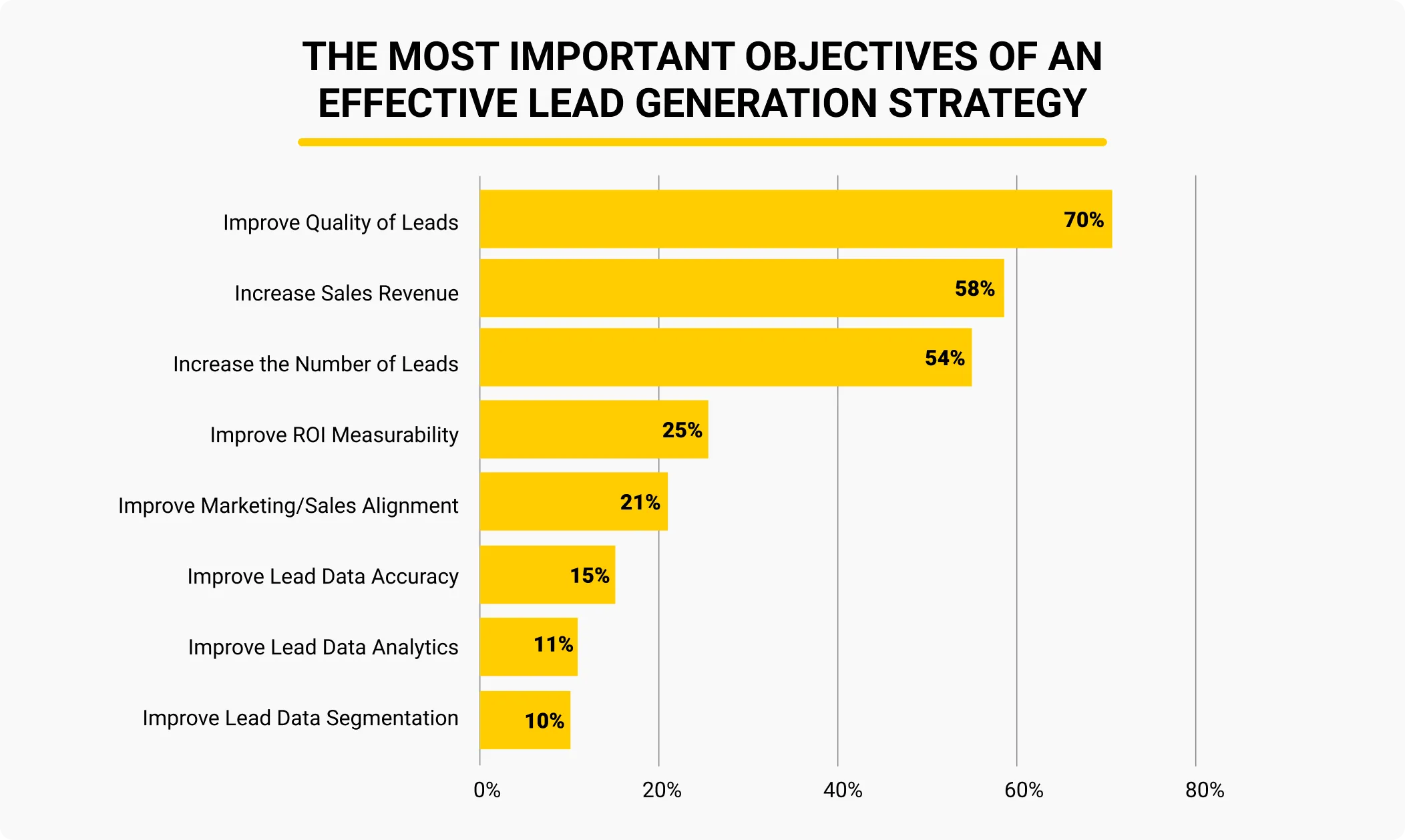
We want to provide your sales development team with ways to find decision-makers and pursue quality leads, so let's go over four potential solutions that can be effective.
Highest Quantity/Lowest Quality: Buying Lists
What if you could employ multiple methods to quickly populate your contact list, with hundreds of possibilities to leverage for leads? One option is to simply buy lists from vendors. Sounds easy? Just remember, those leads are NOT quality leads. But before we move on. It's important to understand that those leads usually lack quality. They are not targeting specifically, current, or relevant to your actual offering. In other words, the purchased list is usually not enough to build out quality leads like you were.
High Quantity/Low Quality: Web Scraping
Picture the process of using automated tools to extract contact information from websites, commonly known as web scraping. Web scraping can be an excellent way to create large amounts of leads. Here is the tricky part: web scraping is a gray area because some websites allow it, and some websites do not. Despite the allure of web scraping, you need to be careful and conscientious of each website and its rules, along with any legal issues.
Low Quantity versus High Quality: Outsourced Lead Gen Team
Imagine a team of lead generation professionals feverishly and tirelessly working to find you high-quality leads that match your ideal customer profile!
When you hand over this key task, you benefit from their thorough research abilities, which guide you toward prospects that align with your business. These professionals focus on locating leads that matter and ensure you get precise and useful details. Their support allows you to approach potential clients with confidence, knowing you're connecting with people who are most likely to find value in your products or services.
Lowest Quantity/Highest Quality: Create Customer Profiles
In step three, we discussed the urgency of creating a detailed customer profile as a blueprint for your most successful customers.
This profile gives you a crystal clear picture of your ideal customers, both in terms of their company size, pain points, software preferences, and everything else. When you understand your customers' target audience, you can tailor your sales approach to target them better.
It's like having a secret weapon to customize your approach, speak their language, and solve for their needs. With an understanding like this, you can reach out with confidence to prospective customers, knowing you have deep insights into their needs and how your product can solve for them.
Anticipate Objections
Just imagine for one second: What if you could predict and respond to every word of your prospect's response before they said it? Talk about a superpower in sales!
We might not be super-human, but we can sure pretend! A real hack to being an amazing salesperson is knowing your ideal client inside out. When you are able to get to know them inside out, you should be able to grasp their pain points, pains, and dreams! Once you get this, you can easily show how your SaaS will eliminate their pain. But the problem is, every prospect is different, and their needs are different. That's why being personal and tailoring the messaging to everyone is so important.
To get ready to handle objections, start by listing the usual concerns prospects bring up during conversations. You can write them in a notebook or store them in your phone's notes app.
When you notice patterns, you will understand what to focus on and ways to address objections. Another smart strategy involves using survey funnels to gather input from current clients and free trial users.
If you encourage them to provide feedback, you will pick up valuable knowledge about their struggles and how they view your SaaS product compared to others they have used before. Keep surveys short and quick to complete, under two minutes, to make it more likely people will finish them.
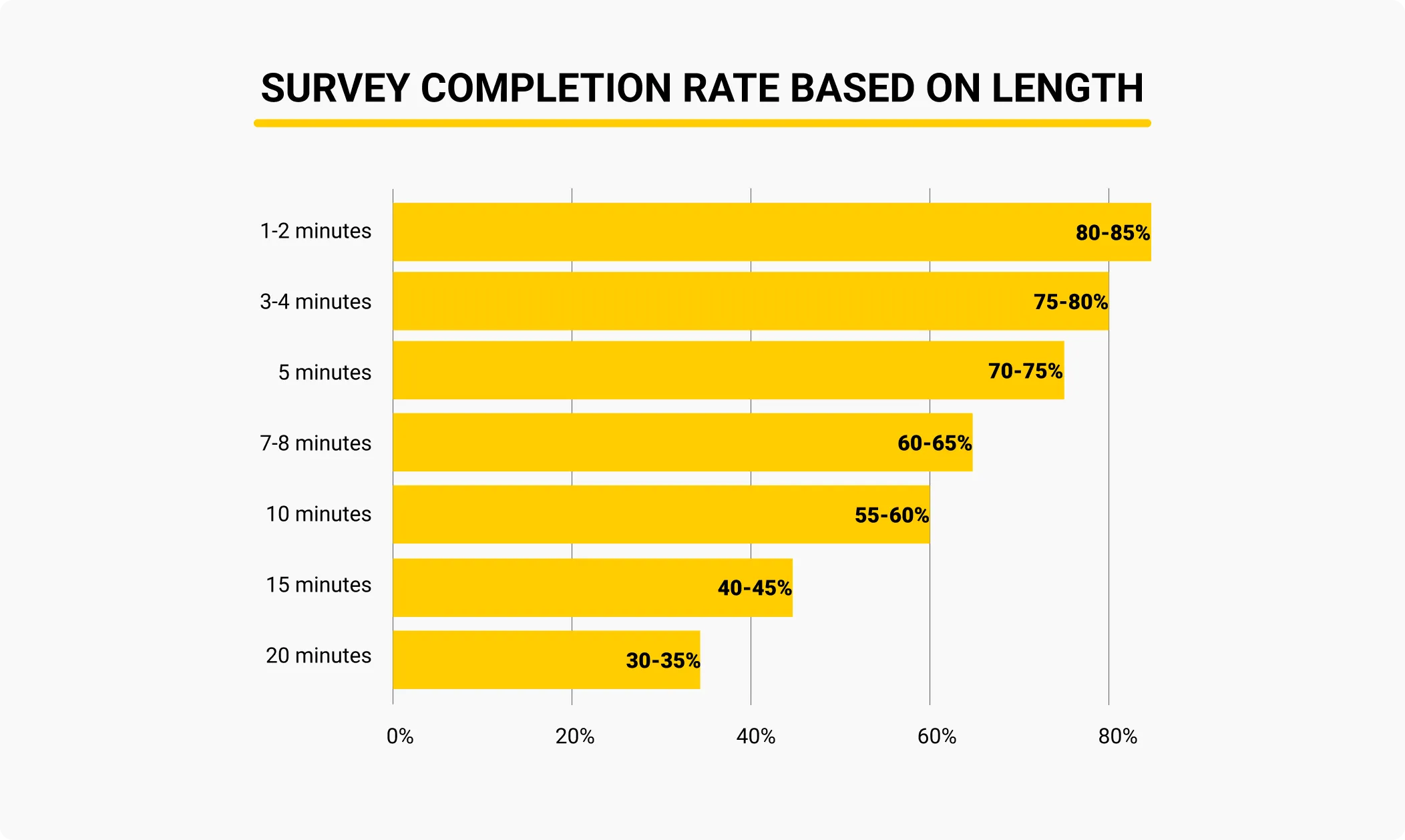
While we may not have divine sales skills, these practical approaches will help you implement your sales plans into action. So roll up your sleeves and leverage conversations through your selling framework, address objections before they arise, and offer compelling solutions with your prospects will resonate with and buy.
Incorporate Personal Interactions
Make it as convenient as possible for prospects to contact you. Provide as many options as possible for them to reach you, email, contact forms, phone calls, and live chat, so they can choose the way that works for them. This approach will provide prospects with more information about your business and enhance the chances of converting them into paying customers.
According to McKinsey, using video conferences and online chat as digital interaction methods with sales representatives has significantly increased. Video conference interactions have risen from 38% to 53%, while online chat interactions have increased from 40% to 49%.
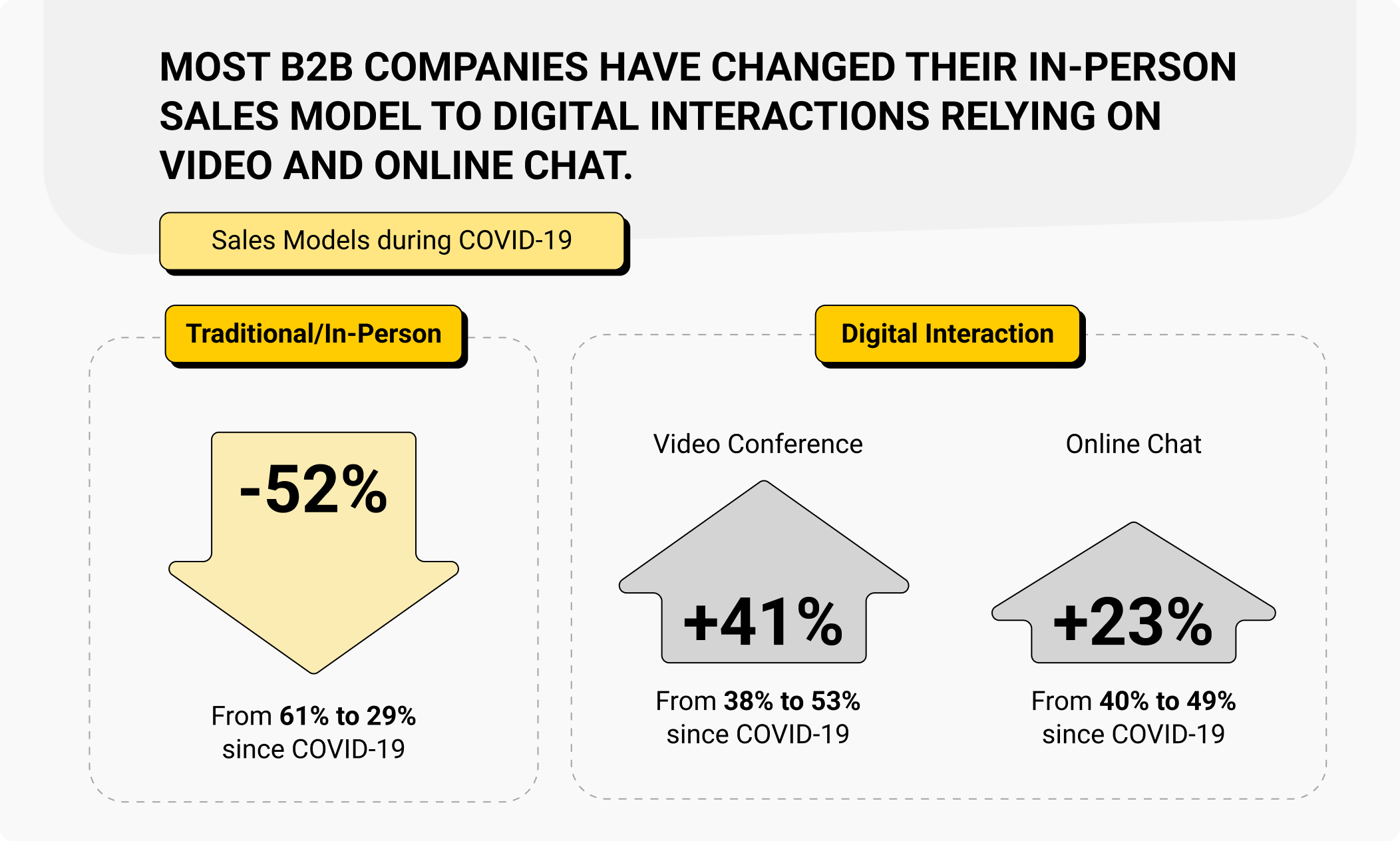
Feel free to use a live chat widget on your website or try video interactions to connect with prospects. While applying this B2B sales strategy, remember the two foundational ideas: the Law of Visibility and the Law of Friction in Sales Funnel Physics. The Law of Visibility states that you simply need to expose your offers to achieve sales and conversions. If you do not clearly or overtly offer your contact options, good luck getting in touch with your prospects. The Law of Friction states; you want to do everything you can do to minimize friction, to create a buying experience for a/your potential buyer. When lowering friction for your prospects, it is about offering visible or available-to-use contact options that feature a direct user experience with minimal friction.
Remember, the key is to make your contact options highly visible and easily accessible, enabling prospects to initiate contact quickly. This approach fosters stronger connections and facilitates business growth.
Provide the Option for Both Annual and Monthly Agreements
Picture yourself at a candy shop with just one kind of candy on display. Now compare that to standing in front of an aisle bursting with chocolates and all kinds of treats.
Which option do you think would excite you more?
Chances are, you'd enjoy the one with more choices to indulge your cravings. It's the same idea when it comes to your SaaS business. By letting customers pick between yearly or monthly contracts, you give them more control and adapt to what they want.
This concept is backed by the Law of Range, which suggests that people respond positively when they have various choices. Expanding the range of choices can create a more customer-centric approach. Interestingly, many SaaS companies overlook the importance of offering flexible pricing models. ProfitWell says only one in five SaaS companies provides annual and monthly subscription options. However, this is a missed opportunity.
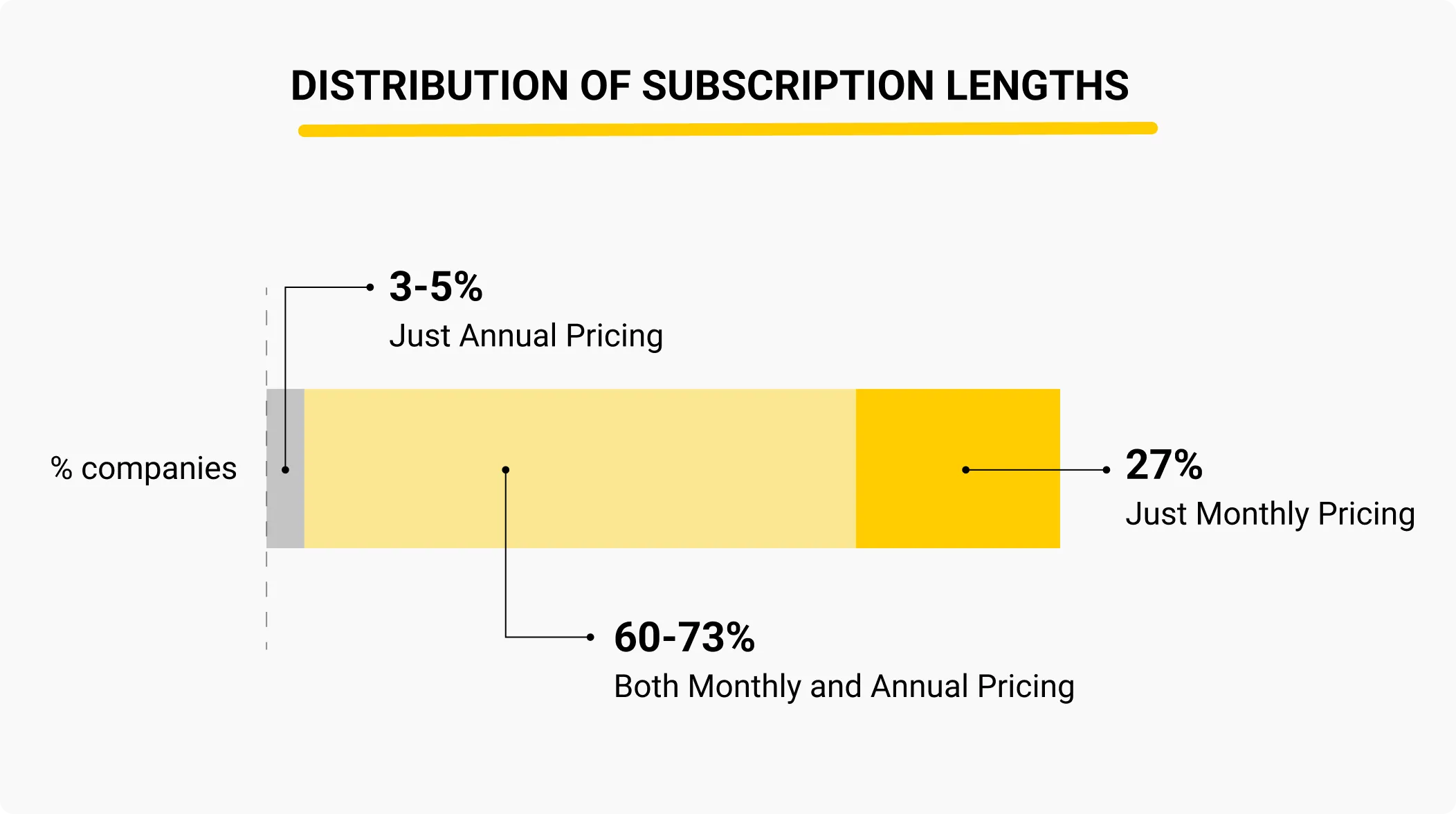
It makes sense when you think about it. With an annual subscription, customers have fewer chances to back out compared to a monthly subscription that allows cancellation every month.
So, the key takeaway is to make the purchasing process as easy and appealing as possible for your customers. By giving customers more options and meeting their preferences, you are building loyalty. This approach can also make your business income more stable.
Similar to a candy store, having a variety of choices leads to happier, more content customers.
The Product Must Align with Your Target Market.
Did you know that an astounding 42% of startups fail because they don't meet the needs of the market?
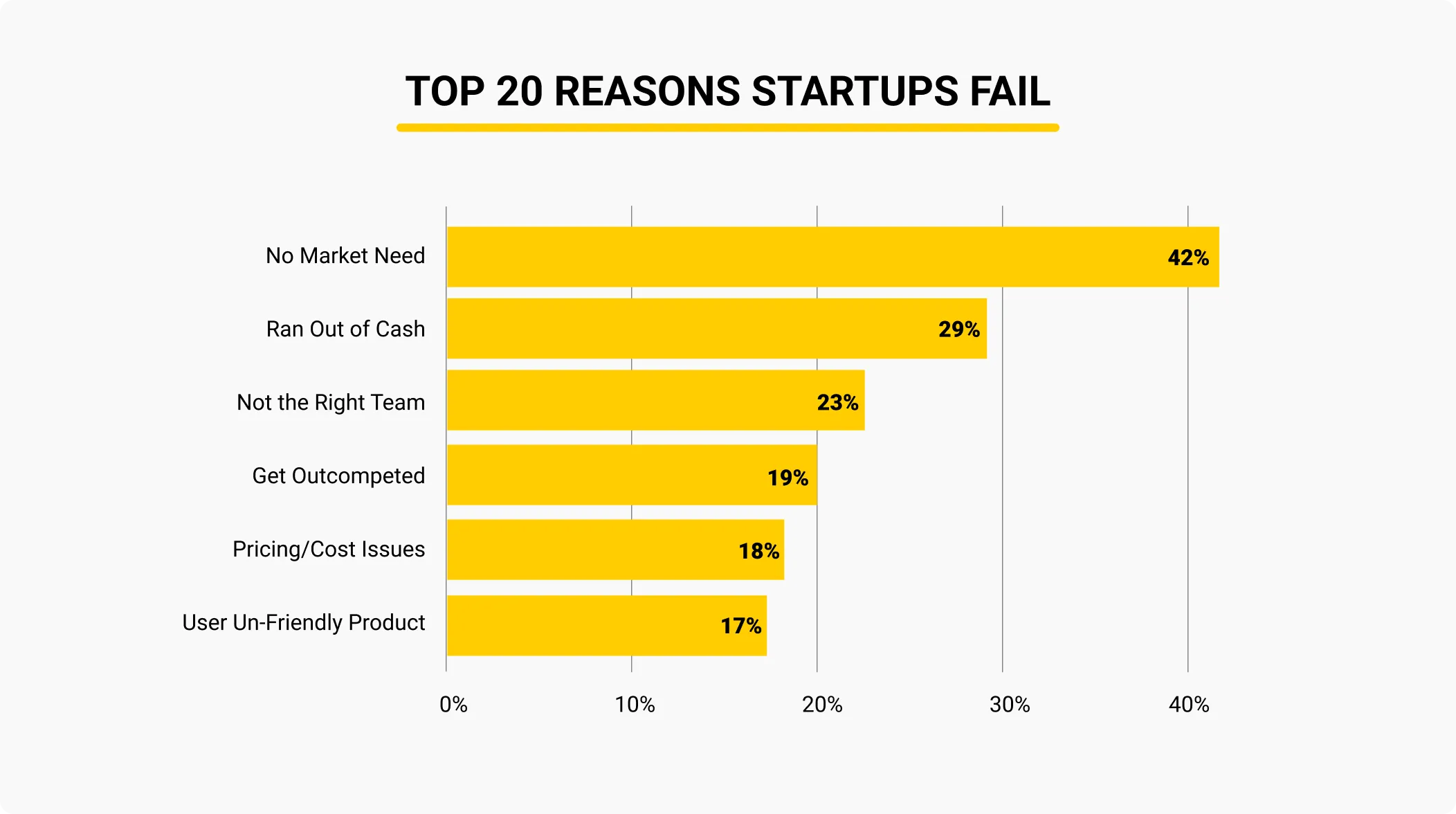
When selling B2B SaaS products or services, you must never forget to consider the needs of your audience. You are trying to solve a problem that they find worth solving. If there is no value in what you are offering, or if you are not solving a pain point, then why would they buy it?
This is why it's important to dedicate time to learning about your audience. Immerse yourself in their world, discover their pain, and understand their needs. After all, once you know their needs, you can tailor what you offer to something that will meet their needs. One thing to keep in mind is that connection with your audience is important in the B2B SaaS industry. When you showcase that you understand their pain and offer them a solution that truly solves their pain, you're already on your way to capturing their attention and trust.
Ensure Your Pricing is Accurate
Many companies pour their time and resources into creating what they believe to be the perfect product, but they often overlook the critical pricing aspect. It is natural to get carried away with fine-tuning your product and unintentionally overlook the critical element of determining the right pricing strategy. However, pricing is a make-or-break factor, especially in SaaS products. It would be best to strike the right balance because sitting in the middle can harm your success.
Let me introduce you to the concept of a Veblen product in the microeconomics world. These products are highly known for their exceptional quality. Interestingly, their demand tends to increase as their price rises. A perceived value is attached to a higher price tag, making people desire them even more. You can maintain an ongoing pricing strategy and enjoy consistent profits with a Veblen product. Customers often associate higher prices with superior quality, so they are willing to invest in such products.
Conversely, setting a low price for your product does not automatically translate into attracting more customers. While it may seem like a competitive advantage, it can backfire, especially in the high-end market. Some customers associate low prices with poor quality, even if that is not the case. These types of products are known as Giffen products. Even if there is demand, it is usually sporadic and will have erratic patterns of spikes and falls in demand, making it very difficult to earn consistent and reliable profit.
You will be forced to work on producing quality saas products, and people will want to buy them at nearly any price. One thing to be sure to remember is that you need to consistently deliver value and experiences for your customers.
Highlighting the quality and worth of your product allows you to stand out in the market and draw in customers ready to pay for what you offer. Businesses in the SaaS world use different pricing methods to figure out their charges for users.
These models include:
Implement Usage-Based Pricing
In this case, the customers are billed for what they consumed of the product during the billing cycle. The billing is calculated at the end of each month.
Adopt Individual User-Based Pricing
Implement Individual User-Based Pricing With a quantity model, the customers are billed based on the number of users in their account. The more users, the more they are billed.
Implement Tiered Pricing
In this model, firms provide several packages at set prices with different options. Customers select the package most suited to their needs, and packages with more features cost more.
Flat-Rate Pricing
In this model, customers pay a fixed price per month or year to access all the product features. It offers a straightforward and inclusive pricing structure.
Benefit Per-Feature Pricing
This method sets the cost depending on which features customers decide to add to their subscriptions. Adding more features increases the overall cost. When selecting a pricing model, you must balance providing value to customers and generating revenue.
It involves considering the right strategy for your product, such as:
Use Low-Cost Strategy (less than £6,000 per annum)
This is ideal for products with a freemium model, allowing regular email sign-ups. The goal is to acquire a large customer base that can be advocates for your product.
Implement The Middling Middle (£6,000 to £100,000 per annum)
This approach works well for complicated or pricier items that might need some help from salespeople. Though cheaper than big business solutions, they still need a good process to cover sales costs.
Enterprise Selling (over £100,000 per annum)
This method fits best for high-value products meant for use across whole companies. Sales happen face-to-face, and selling these products can take longer, sometimes several months to close a deal.
Synchronize Sales and Marketing
Magical things can happen when sales and marketing teams work together. Sales cycles become shorter, conversion rates skyrocket, and revenue significantly increases. But how can you achieve this perfect alignment?
It all starts with regular meetings and constant communication between the two teams. The sales and marketing teams can overcome obstacles and optimize workflows by coming together and discussing their strategies, challenges, and goals. They need to be on the same page when understanding their target audience and buyer personas, as this knowledge forms the foundation of their collaborative efforts.
You see, the success of your inbound marketing strategy relies heavily on the relationship between these two teams. Marketing generates those precious leads, and it is up to the sales team to turn them into loyal, paying customers. That is why maintaining open lines of communication and fostering collaboration is crucial.
And when it comes to content marketing campaigns, teamwork is the key to success. The marketing team puts their creative hats on and crafts engaging content to nurture those leads, while the sales team needs to be in the loop and aware of all the promotions and offers. This way, they can adapt their approach and tailor their sales pitch to align perfectly with what the leads are already familiar with.
So remember, when sales and marketing teams work together hand in hand, the results are extraordinary. It is a recipe for success that can supercharge your business and take it to new heights.
Develop a Cultivating Plan
Imagine the impact a "free trial" option can have on boosting your B2B SaaS sales. Nearly 8 out of 10 SaaS companies will leverage usage data for better customer experience and pricing strategies.
Providing a free trial allows potential customers to take your product for a test drive and see if it meets their unique needs. Some businesses may hesitate to offer free trials, worrying about the potential increase in customer acquisition costs. But here is the thing: a short trial period of 7 to 14 days can work in your favor. You see, most customers are not genuinely interested in your SaaS product and tend to drop out of the trial before it even ends.
This precious differentiation now enables your sales team to focus on following up with just the leftover high-intent prospects who were interested enough to keep using your product during the trial phase.
Your sales cycle is trimmed, and you save enormous costs in acquiring seriously interested customers. Your trial pack does not have to be packaged with every single feature that your product supports.
Instead, you can curate a bundle that showcases the best and average features, offering it as a free trial. This way, you can gather valuable feedback from your trial users and make adjustments based on their responses, whether adding more features or refining existing ones. By allowing potential customers to experience your SaaS product firsthand, you give them the power to make informed decisions and see the value it brings to their business. So, do not miss out on the incredible potential of free trials to drive your B2B SaaS sales to new heights.
Allocate Resources to Content Marketing
Investing in content marketing to sell your B2B SaaS product is a fantastic opportunity to make it more relatable and less intimidating for businesses that may feel overwhelmed by new software.
You can see the growing popularity of SaaS content marketing by looking at the continuous search traffic for "content marketing." Even in 2022, despite the impact of COVID-19, it remained a relevant and sought-after strategy.
On average, B2B buyers take the time to engage with around 13 pieces of content before reaching a decision, yet surprisingly, 43% of B2B companies do not actively measure the return on investment of their content marketing endeavors.
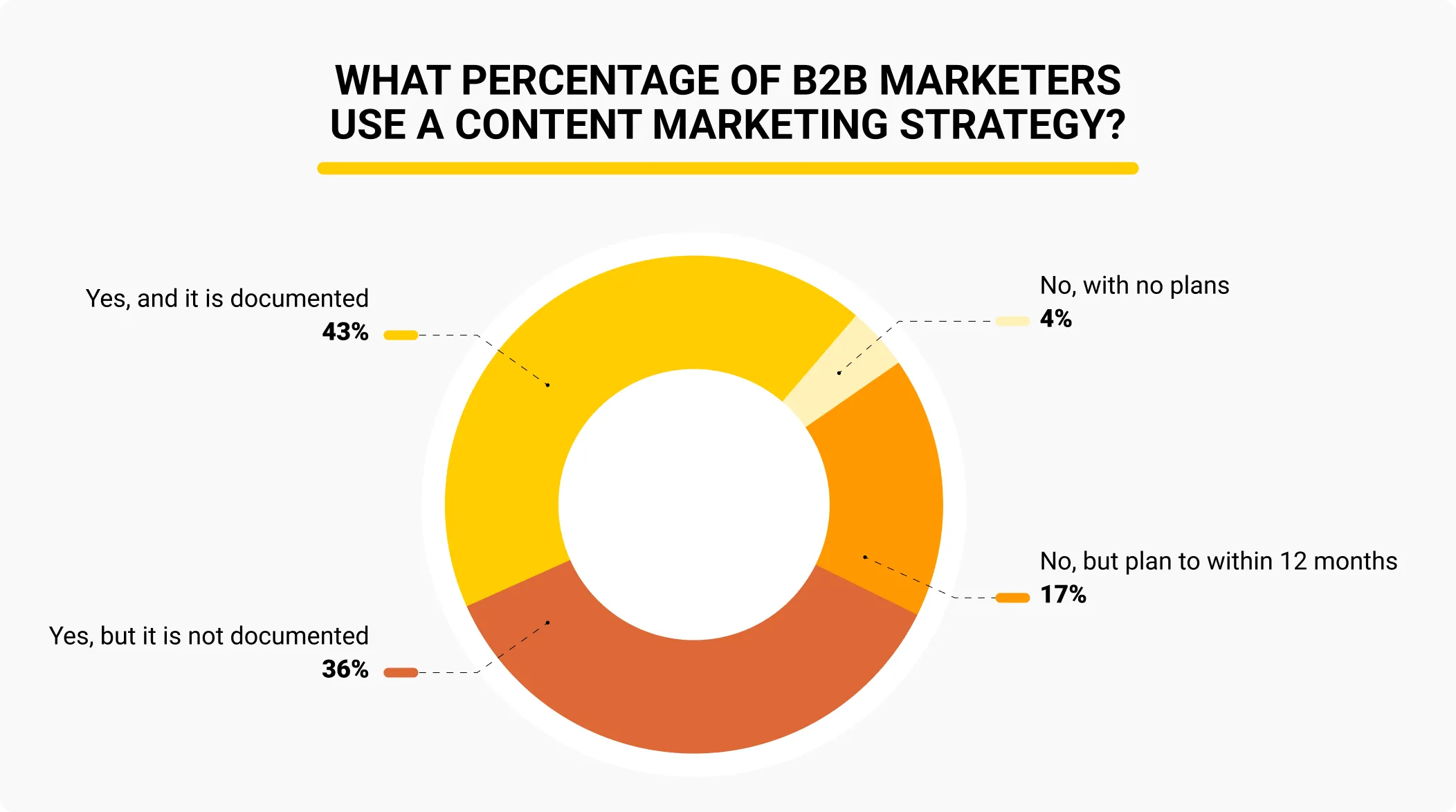
The great thing about content marketing is its ability to provide your audience with value as well as a glimpse into what your brand can do for them. Put simply, it's reversing the conversation from what your people require to what your people actually need. Again, it's all about satisfying your ideal customer's needs and having content, so your sales staff can meet their numbers.
In all content marketing, your mission should be to think about what kind of content truly serves and helps your clients. That might be through amazing blog posts, useful e-books, full white papers, social status updates, newsletters, good infographics, action-taking testimonials, and excellent videos.
Remember the power of online communities like Quora, Reddit, Twitter, and Medium, as they can drive valuable traffic to your B2B SaaS products. And let's not underestimate the impact of video. Video content lets you connect with busy customers who prefer watching over reading. According to Weidert, 83% of people want to see more videos from brands, and 95% of marketers using video have seen an increase in user understanding of their product or service. Remarkably, 80% of marketers credit videos for directly boosting sales.
Adding videos to your content marketing is a great way to grab attention, build trust, and really show off what your product can do!
Provide Comprehensive Training to Your Sales Representatives
Regarding B2B SaaS selling, you must recognize that it differs from traditional sales methods. That is why it is an intelligent move for sales teams to invest in training their reps to excel in this unique domain.
Understand Your Target Market
Building a successful sales strategy begins with truly understanding your target market. You need to know the answers to important questions like:
- Who are the companies you are selling to?
- What challenges do they face?
- What are they aspiring to or hopeful of achieving?
- In what way does your product or service help them achieve their goal?
Identifying the decision makers within these companies is important, too. The B2B market is broad and wide-ranging, with smaller real companies, medium-sized businesses, and large enterprises. Each segment has its own needs, preferences, and pain points. This is why it is so important to take the time to segment your market and identify your ideal customer. This will assist you in creating marketing materials that help market your business, while connecting with your target audience, and making it much easier for you to sell to them.
By understanding your target market, you can establish your product or service as the perfect solution to their specific challenges. It is like speaking their language and offering exactly what they want. So, put in the work and truly understand your target market and watch your B2B sales take off.
Establish an Ideal Customer Profile (ICP) and Buyer Personas
To develop an ideal customer profile (ICP), you are building a very specific description of the company you would want to consider as a "perfect match" company, which gets immense value from your product or service and also yields high revenue for your business.
This profile is a handy tool to assist you in targeting your selling efforts and optimizing your chances of obtaining high-quality leads. Now, let us explore the four essential steps that you must take to develop a successful ICP:
Step 1: Develop a List of Your Most Valuable Clients
First, identify your top ten customers and consider their investment in your product, both in terms of money and in terms of value they derived from your product.
These worthwhile customers will serve as the basis for developing your perfect customer profile.
Step 2: Identify Shared Characteristics
Once you've established your list of top-performing clients, the next step is to determine what they have in common.
Think about their location, their size, their public, and anything else that may be relevant.
You must be sure to observe the similarities because they will lead you to create your ideal customer profile.
Step 3: Rank the Importance of the Characteristics of Your Target Customers
Having identified the common attributes, it is crucial to establish their priority based on their significance. Specific attributes will hold greater importance than others, so it is essential to prioritize between five and ten of them. For example, consider a scenario where your company offers specialized software solutions tailored for the healthcare sector. In this case, the industry attribute (healthcare) may become before factors like company size.
Step 4: Complete the Ideal Customer Profile Template
This process ensures that you have done it all correctly and as the target ICP would require.
Select the Appropriate SaaS Sales Model
Selecting the best possible sales model for your SaaS business depends on your product, your target market, and the resources available to you. Self-serve and high-touch are the two primary sales models in the SaaS industry.
Opt for the Self-Service Model
The self-serve sales model, also known as the self-service model, is well-suited for affordable and straightforward products that cater to small businesses or individual users. In this model, customers can complete their purchases without needing direct assistance. The self-serve model brings benefits such as reduced overhead costs, scalability, and a quicker sales cycle.
If your product is affordable and uncomplicated, your target market primarily consists of small businesses or individual users, and your product does not require integration with other tools, consider implementing a self-serve sales model. The model allows customers to self-navigate the purchasing process; therefore, it's usable for some products that require little support for the customer.
Select the High-Engagement Model
The high-touch model is best suited to high-cost, complex products for mid-sized to enterprise customers. Here, sales and customer success teams play an essential role in engaging prospects actively and offering one-on-one guidance through the sales process. The high-touch approach ensures a more tailored and comprehensive customer experience, particularly when handling complex sales situations.
Additionally, this model often leads to higher deal values due to the enhanced level of service and support provided.
A high-touch sales model suits you if:
- Your product comes with a significant price tag.
- Your target market primarily consists of mid-sized to enterprise-level customers.
- Your product is complex and requires a substantial learning curve for effective utilization.
Adhere to Your Unique Selling Proposition (USP) and Core Value Proposition
It gives a key reason why a potential buyer should pick your product. It highlights what makes your product useful and worthwhile.
Say you sell an all-in-one SaaS CRM system. Your value proposition might sound like this: "Manage contacts, emails, and sales pipelines, all in one place." Meanwhile, the unique selling proposition points out what makes your product different from others and emphasizes its special features. To grab customer attention and display your standout qualities, having both a powerful value proposition and a clear USP is essential. Each serves a vital role in the sales process.
The value proposition catches attention and generates interest, while the unique selling proposition convinces prospects that your product solves their problem best.
Establish a SaaS Sales Funnel
A SaaS sales pipeline denotes the journey a prospective buyer will take, starting at the first moment of awareness to beyond the point of sale.
The SaaS sales pipeline typically follows five stages:
Awareness
Imagine a scenario where your potential customer faces a challenge but is unaware of your remarkable SaaS product. This is where the Awareness stage comes into play.
Your role at this phase is to grab their attention and make them aware of the existence of your product. You can achieve this by combining compelling content marketing, social media engagement, and placing paid ads. With a good execution, you can introduce your SaaS product and clearly mark it as the ideal solution for their problem.
Interest
Once you have caught their attention, you must ignite their interest and make them interested in your product. You must allow them to imagine that your solution is precisely what they had been looking for in resolving their problem. You can do this by telling them more about your product and its great features. You can also offer them real success stories, attention-grabbing product demos, and free trials of your product without cost.
These strategies will capture their attention and make them realize the worth and advantages of your product. By establishing a solid case for why your product is superior, you can earn their confidence and make them believe that your solution is necessary to address their specific issues.
Consideration
During the Consideration stage, your potential customer is intrigued by your product but not quite ready to purchase. They are actively comparing your offering with similar solutions in the market, weighing their options. Keeping them engaged and interested would be best during this crucial phase. You can enhance their understanding of your product's value by offering supplementary resources and materials.
Ebooks, webinars, and other informative content will help them understand how your solution stands out. This is also a moment in which to address their pain points and demonstrate to them how your SaaS solution can cost-effectively solve their problems. By providing a detailed comparison of the product and a whole buyer's guide, you are in a position to demonstrate the special benefits and value of your product.
This personalized engagement will win them over with the benefits of picking your product from the rest. Engage them through content specific to them, and you will be sure to push them to the next level of the sales funnel.
Purchase
Your buyer has now reached the final stage of their decision and is prepared to complete the purchase. To seal the deal, you could give them a good discount. This makes your offer hard to refuse and pushes them to act.
Also, by offering a money-back guarantee or a similar proposition, you can instill confidence in their decision, hence eliminating any inhibitions or second thoughts. With these tactics, you can establish a sense of urgency and eliminate any lingering reservations, thereby making the deal more likely to close and gaining the commitment of the customer.
Retention
A SaaS company's engagement with its users does not end at selling. Maintaining happy and loyal users is generally more crucial than getting new ones.
During this stage, the main goal is to maintain customers as happy and engaged as possible to stick with the product. Companies can achieve this in many different ways, such as:
- Offering superior customer support.
- Implementing powerful customer success programs.
- Such as ongoing updates and productivity-enhancing features.
- Developing live communities where users engage and cooperate.
- Developing rewards that reward and motivate long-term users.
Focusing on these programs allows you to establish long-term customer relationships and optimize their satisfaction, which drives customer retention and ultimate business success.
Streamline Your SaaS Sales Process
Implementing automation wherever feasible is one effective strategy to enhance your SaaS sales process. Numerous sales automation software platforms are available, each offering various features while sharing fundamental functionalities. Such software can assist your sales representatives with tasks such as lead generation, contact management, email marketing, appointment scheduling, proposal creation, contract management, and payment processing.
Through automation, you can free up your sales reps' schedules, giving them more time to concentrate on engaging with prospects and building meaningful connections.
Provide Strategic Trial Periods at No Cost.
Providing free trials to your B2B SaaS customers can be a game-changer. It allows them to try your software and see if it fits their needs. In fact, according to Invesp's research, 65.5% of SaaS companies have incorporated trial offers into their sales strategies.
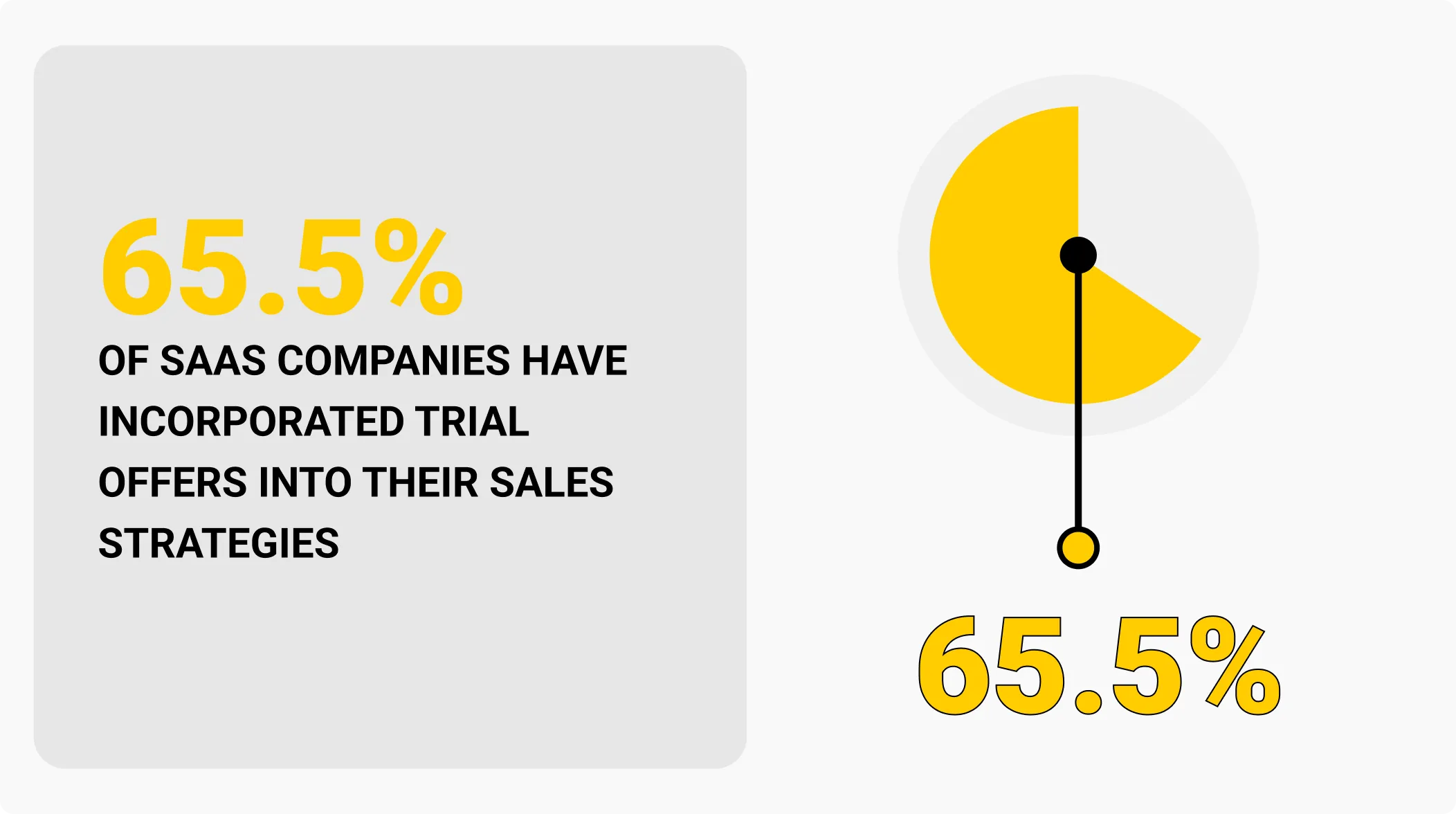
This approach can work wonders for your SaaS products, especially if you want to boost sales. An effective B2B SaaS sales strategy is to offer potential customers a free trial. However, it is important to keep the trial duration concise and focused.
This timeframe has proven to be optimal for the vast majority of B2B SaaS products. Just look at the success story of Kashflow.
This SaaS accounting software company boosted its trial-to-paying customer conversion rate by 25% by cutting the trial period from 60 days down to 14. A shorter trial can speed up your sales process and reduce the money spent on getting new customers. Most users don’t even use the full length of their trial, so making it shorter could be a smart move.
Plus, having a limited window of 7 to 14 days makes users feel urgency and pushes them to explore your product more. And if someone needs extra time and asks, you can grant a trial extension. The fact that the trial is free provides a sense of reassurance to users. They feel at ease knowing they have not invested any money upfront and can explore your product without any financial risks. This holds even if you charge a small fee during the trial period. However, it is important to strike a balance and not reveal the full extent of your product or service during the trial.
Instead, entice users by glancing at your offer, leaving them eager to discover more. You can achieve it by implementing certain limitations, such as restricting features, usage, or time, or even requesting credit card information upon sign-up.
Speaking of credit card information, whether to ask for it upfront depends on your unique circumstances. If you are in the testing phase and focused on gathering user feedback, avoid requesting credit card details initially. However, if you have an established company offering a high-value SaaS product, you will likely target high-quality, genuinely interested, and committed leads. In such cases, it is reasonable to ask for credit card information as a sign of their commitment and readiness to explore your product further.

Have a Solid Upsell Strategy
It maximizes revenue and increases customer lifetime value. Studies have shown that maintaining a current customer is up to 5X more cost-effective than acquiring a new one. In addition, research indicates that existing customers have a 60-70% probability of making a purchase, while the chances of selling to a new lead are significantly lower at 5-20%.

Using the power of upselling helps businesses tap into this untapped revenue potential. Upselling boosts sales and enhances customer satisfaction by offering additional value and customization. It allows companies to capitalize on existing customer relationships, upsell higher-tier plans or other features, and drive overall revenue growth. With a well-executed upsell strategy backed by data-driven insights and personalized recommendations, businesses can unlock significant upsell opportunities and drive long-term success.
Select the Appropriate Sales Approach
A sales methodology is a structured framework to guide the sales process, providing sales professionals with a consistent and practical approach to engaging with prospects and customers.
Regarding SaaS sales, five popular methodologies are worth considering:
Adopt a Customer-Focused Sales Approach.
This approach is all about really getting to know what each customer needs, then creating a personalized experience, and finally, showing them how your product is the perfect fix for their problems.
Implement a Provocative Sales Approach
With the challenger sales methodology, sales reps take on other advisors, encouraging prospects to question their existing assumptions and explore innovative solutions that can meet their specific requirements.
Practice a Solution-Based Selling Approach
The consultative selling approach focuses on establishing the sales rep as a trusted advisor to the prospect. It involves actively helping prospects identify their needs, exploring various solutions together, and assisting them in making informed decisions.
Practice Outcome-Based Selling Approach
Value selling focuses on clearly communicating the measurable benefits and the ROI your product provides. This methodology aims to differentiate your offering from competitors by highlighting the unique value it brings to customers.
Implement Target Account Selling (TAS) Approach
The TAS methodology involves identifying and prioritizing high-potential target accounts. Sales efforts are concentrated on these key accounts, and relationships are built with decision-makers within those organizations.
While there is not a one-size-fits-all sales methodology that is perfect for every business, it is essential to identify the best option for your specific needs. Customize the chosen methodology to align with your product and target market, and build a sales strategy tailored to your unique circumstances.
Create a Focused and Specialized Portfolio
Entrepreneurs have established their B2B SaaS market dominance by prioritizing personalization. When organizations have a wide range of products, the potential for conversion can become diluted. To overcome this, you must focus on specialization and offer a targeted solution that builds trust with potential customers. This approach helps sales reps become known as industry experts, which really boosts their professional standing.
A prime example of this strategy is Slack, a prominent player in the global B2B SaaS sector that has established dominance in business messaging. By concentrating on a small and targeted portfolio of services, Slack has become renowned as the number one platform for instant business messaging, video conferencing, and productivity bots. Likewise, B2B SaaS companies should start with a compelling core offering and gradually explore additional features. The key elements of this approach are the below:
Land
Begin with one or two core cloud-based services that are easy to host. Craft a simple yet meaningful value proposition for these services to streamline the B2B SaaS sales process and facilitate understanding for both sales reps and customers.
Engage
Plan effective onboarding activities to engage customers for the long term. This can include regular webinars, pre-recorded tutorials, and easy access to knowledge resources supporting their product use.
Expand
Once you observe that existing customers are being retained, explore further opportunities within your portfolio. Interact with customers, understand their expectations, and plan new services accordingly.
By following this approach, B2B SaaS companies can gradually expand their offerings while focusing on delivering value to their customers.
Employ Outbound Marketing Instead of Inbound Marketing
There are two distinct marketing approaches for B2B SaaS brands. The first approach is the push strategy, where brands actively push prospects by providing helpful information and expecting engagement. On the other hand, the second approach is the pull strategy, where companies provide specific information to buyers, enticing them to become interested and naturally drawn in to take action.
The push strategy primarily relies on advertising and promotional efforts. While it can be effective, it tends to be costly. In contrast, the pull strategy offers value and generates organic interest. This approach involves providing customers with valuable resources such as eBooks, datasheets, whitepapers, blogs, and more. The goal is to offer buyers the information they seek, leading them to visit your website in search of additional resources autonomously.
Both marketing approaches have their merits in the B2B SaaS industry. However, we lean slightly toward the pull strategy. This cost-effective strategy emphasizes building customer relationships rather than solely focusing on driving immediate sales.
Resolve Customer Concerns or Alleviate Customer Challenges
Customers willingly provide information, including their first name, email address, contact number, company name, job title, and corporate profile, especially when they receive something valuable. By carefully building a customer database, you can lay the foundation for a well-thought-out and targeted niche marketing campaign.
To generate leads and address customer pain points effectively, consider utilizing the following four vehicles:
Personalizing Content
You may have an extensive customer database, but if you continue sending generic messages that miss the mark with your target audience, all your effort is futile. You need customized content that addresses each customer's specific needs.
So, how can you effectively segment our customer database?
To deliver personalized content that truly speaks to your customers, you need to go deeper and understand their journey through our sales funnel. This will let you create content that directly addresses their pain points.
For customers in the problem-discovery phase, those who are aware they have an issue but are not sure about the details, you must find out what they are looking for. You can provide them with links to your best blogs, white papers that offer solutions to specific pain points, and downloadable e-brochures. Suppose customers are in the consideration phase, where they know about the problem and are researching solutions but have not decided yet. In that case, you want to position yourself as a reliable option. It is the perfect moment to include trial offers, demos, peer podcasts, and instructional videos emphasizing how your solution can satisfy their needs.
Users seek product comparisons, reviews, and pricing plans when they reach the decision phase. You can utilize keyword-rich topic clusters to provide a thorough examination of our product, with no room for ambiguity, and make sure customers see solutions that are present.
Maximizing Benefits
When customers are at the decision-making stage, it is an exciting opportunity you cannot miss. They may contact you for a quote or more information, and you must capitalize on this moment.
To make the most of it, consider these strategies:
- Highlight the most important performance indicators: Show the customer why your product is specially designed to meet their needs. Focus on the critical indicators that set your solution apart and demonstrate its unique strengths.
- Compare with rivals: Compare your product thoroughly with your closest rivals. Point out the superior performance and competitive price of your product, solving a pain that troubles your customers.
- Offer something nobody can refuse: Offer customers something they won't be able to refuse. Begin by offering a demo or trial period for free, so they can feel the value of your product for themselves. Further, offer a premium route for special upgrades not available to anyone else.
Implementing these strategies can significantly increase your chances of sealing the deal and winning the customer's business. It is all about providing them with compelling reasons to choose your product and making it an irresistible choice.
Granting Access
If you keep the basic features of your product hidden from the public, people will not realize the value it can bring to their lives. That is why offering a free 30-day trial without any obligations or the need to provide credit card information is a fantastic opportunity for potential customers to try out your product.
During this trial period, you must encourage them to share their feedback so that you can understand their unique requirements and offer tailored solutions. If put into action correctly, this SaaS sales tactic is a new customer attractor and lead generator for your company.
Encouraging Subscriptions
The free trial is similar to the trailer for the film, if you will, where your clients get to see the essence of what you're offering that makes your product worth it. It is not a question of making everything that you have available for unrestricted use, but letting your customer experience the essence of what will make their experience worthwhile.
Using the freemium model, you provide state-of-the-art tools that provide a great experience and impart value to your business. These resources are carefully crafted to assist potential users in expanding and flourishing, serving as a strong incentive for you to upgrade to our paid memberships.
You'd like to convince them that your software or product is something really exceptional, with advanced features that can truly supercharge your scalability, flexibility, and company efficiency.
Establish Enduring Collaborations with Competitors
Don't downplay the worth of keeping tabs on your competitors. Instead, foster mutually beneficial partnerships that generate two-way traffic exchange and bring quality visitors to both parties.
By providing incentives to your partners, you can gain targeted access to their marketing campaigns and lucrative web properties so you can construct your business without stepping on each other's toes. Employ web-based automation solutions to automate content posting, optimize your marketing campaigns, and improve customer support and outreach. Through automation, you are able to tailor the timing and target of your content as well as optimize your marketing strategy in delivering to the intended audience.
Take the time to study your competitors' successful approaches and examine how they capture top-quality leads. Use this knowledge to create compelling white papers, engaging demos, and enticing product trials that resonate with your target audience. Use their best practices in your strategy to improve response rates and nurture leads. Experiment with shorter calls to action (CTAs) like "Stay tuned for our new projects," "Happy with your current solution?" or "See these other options".
By adopting collaboration, automating where possible, and learning from your rivals, you can maximize your marketing and build a solid connection with your audience.
Prioritize Problem-Solving over a Sales-Focused Approach
B2B SaaS sales can be challenging, and simply showcasing the advanced features of your product is not enough to win over prospects. To make a lasting impression, sales representatives should address customers' problems. This approach helps prospects understand the value of your product and generates genuine interest.
Here are some key steps to master this approach:
- Practice active listening: Sales reps should actively listen to prospects' problems and pain points. You can identify the solution that addresses their specific challenges by understanding their needs.
- Handle objections effectively: In B2B SaaS sales, multiple decision-makers are often involved, leading to objections at various sales process stages. These objections can be related to features, pricing, ownership, security, etc. Handling objections logically and demonstrating how your product effectively addresses these concerns is important.
With these strategies, sales reps can engage prospects on a more personal level, offer personalized solutions, and sidestep objections to increase the chance of closing deals.
Benefits in the Potential of Search Engine Optimization
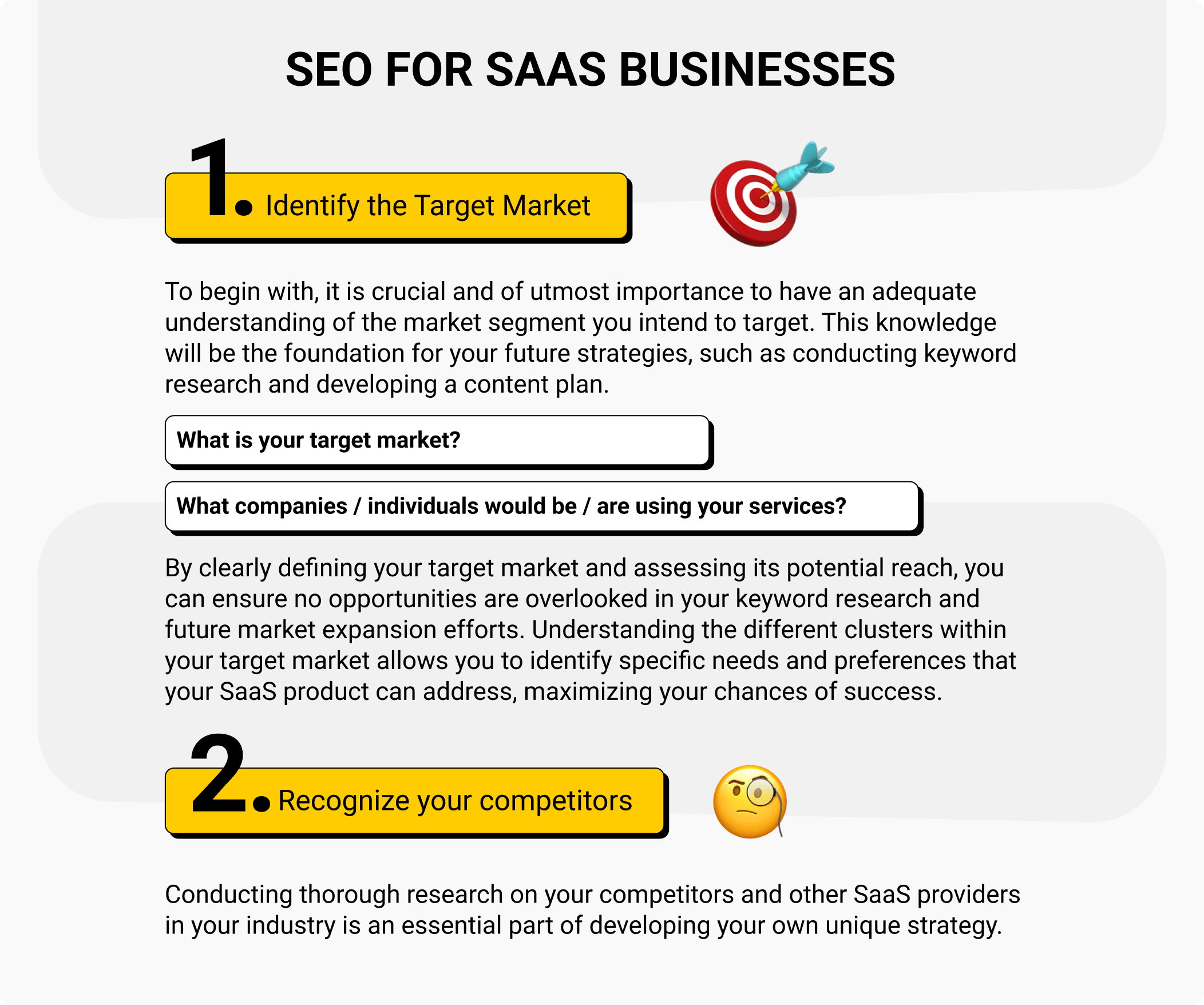
Major SaaS players like Salesforce and Slack have achieved fantastic lead generation and revenue growth results by keeping their online presence as a top priority. They have recognized the power of search engine optimization (SEO) in generating leads, and they implement three effective strategies to achieve this:
Enhancing Search Engine Visibility
Recognizing that search engines are where potential customers go to find solutions, these companies work hard to dominate the results for high-value keywords, especially those longer, more specific search terms that indicate real buying intent.
Their marketing campaigns revolved around creating top-notch content that attracted a significant volume of traffic and ensured that the right kind of audience was drawn to their offerings at the crucial stage of making a purchase decision. This strategic approach allowed them to maximize their chances of converting website visitors into qualified leads, ultimately driving revenue growth.
Increasing Organic Traffic and Lead Generation
Imagine you are running several websites, each catering to different product portfolio segments and attracting visitors. Now, picture this: what if you merged all these sites?
It's a fascinating idea to consider.
Getting all your websites under one name and roof is a great chance to move your existing clients and loyal customers to the new shared platform. This way, you can capitalize on their trust in your business and the promotions you have. This can lead to a phenomenal increase in revenues. You will be amazed to see how the leads from direct traffic coming from these well-known sources can speed up your revenue growth. It's like you discover a treasure of opportunities that were lying in wait for you to harness.
Inclusion in Relevant Industry Directories
Look into different online directories that are related to your niche.
These directories act as detailed networks linking various businesses and provide a great way to find possible leads. Especially pay attention to directories that provide high-quality content and strategic guidance, as they tend to attract small businesses who place greater trust in the listings within these portals. You must prioritize your company's presence and listing in all the relevant directories, as this can significantly enhance your visibility and attract valuable leads.
Establish a Keyword-Focused Social Sharing Network
Create informative and valuable resources such as white papers, eBooks, and downloadable eBrochures that highlight the unique advantages of your product. Use keywords strategically to make them easily discoverable and grab the attention of your target audience. Gathering customer information can build a well-known social sharing network where customers willingly promote your offerings.
Harness the power of social media by offering free trials and demos, and use analytics software to more deeply understand customer engagement. This gets you to build a loyal customer base willing to try new software ideas.
Encourage your customers to tell their friends, colleagues, networks, and followers about their satisfying deals. This puts you in front of new people who are receptive to utilizing the new technology. You would have to implement long-term, strategic email campaigns to reduce customer attrition in your sales cycle.
Prioritize establishing trust, sharing information, and getting people back through your messages. Authenticate your emails to avoid delivery issues and improve click and conversion opportunities.
Develop a Successful B2B SaaS Sales Strategy with AI bees
Developing a strong B2B SaaS sales strategy is the magic formula to unobstructed success in the current business landscape.
By implementing the strategies and techniques outlined in this guide, you will be well-equipped to navigate the ever-evolving landscape and drive your business toward exponential growth. However, to truly unlock your sales potential, you must benefit from the power of advanced technologies. That is where AI bees comes in.
With our cutting-edge AI-powered solutions, we empower businesses like yours to supercharge their sales efforts, optimize customer engagement, and make data-driven decisions. Please do not settle for mediocrity when you can soar to new heights with us. Leap and transform your B2B SaaS sales today.
Book a demo to learn more and start your journey toward unparalleled success.
Make Loss Impossible
with Performance-Based Marketing

Personalized Campaigns with
Precisely Selected Prospects
.svg)
Analysis From Your Dedicated
Account Manager

with a Team of Growth Hackers
we Develop your Tailor-Made Strategy

.svg)







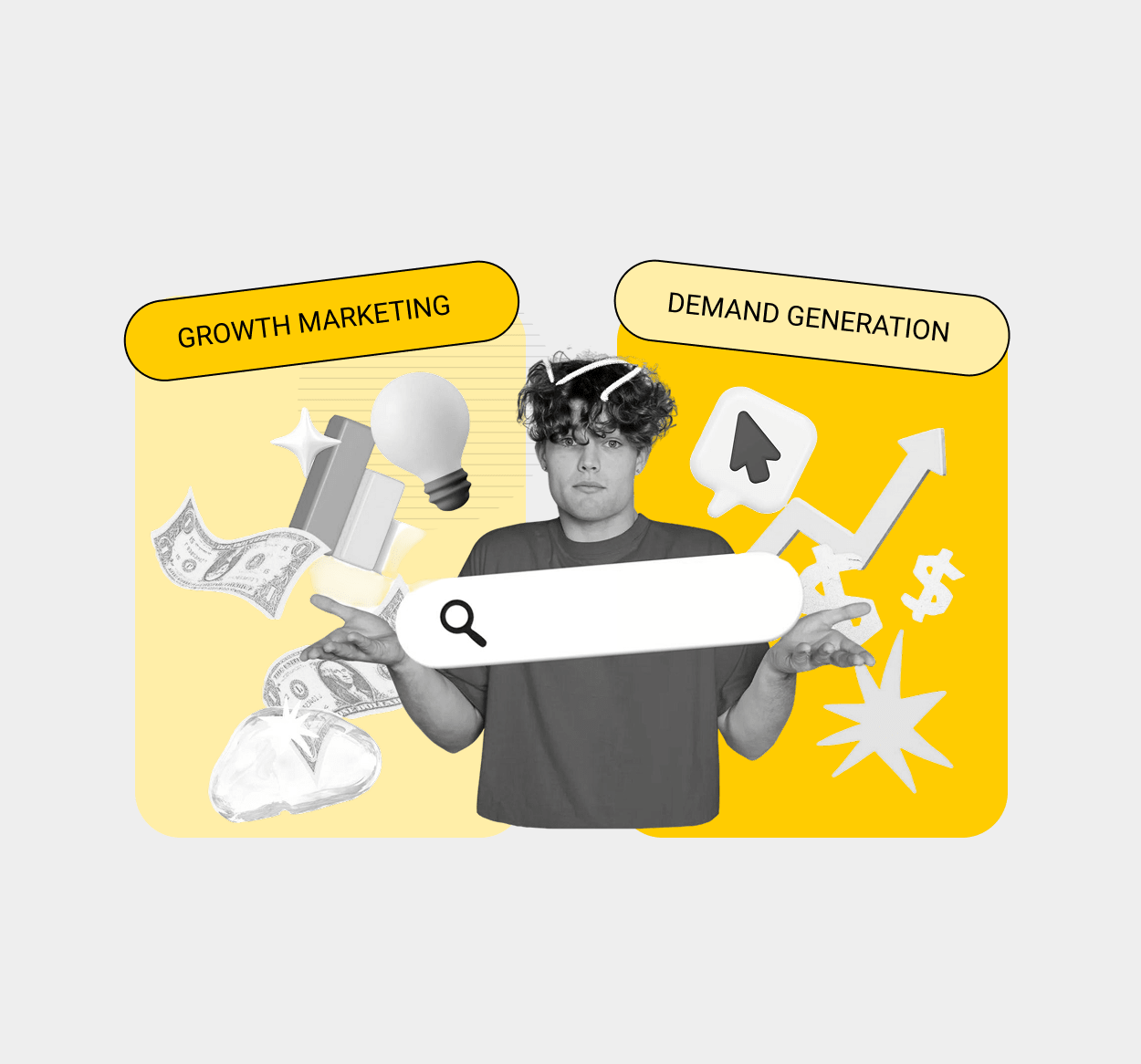



%201.svg)
.svg)





.webp)